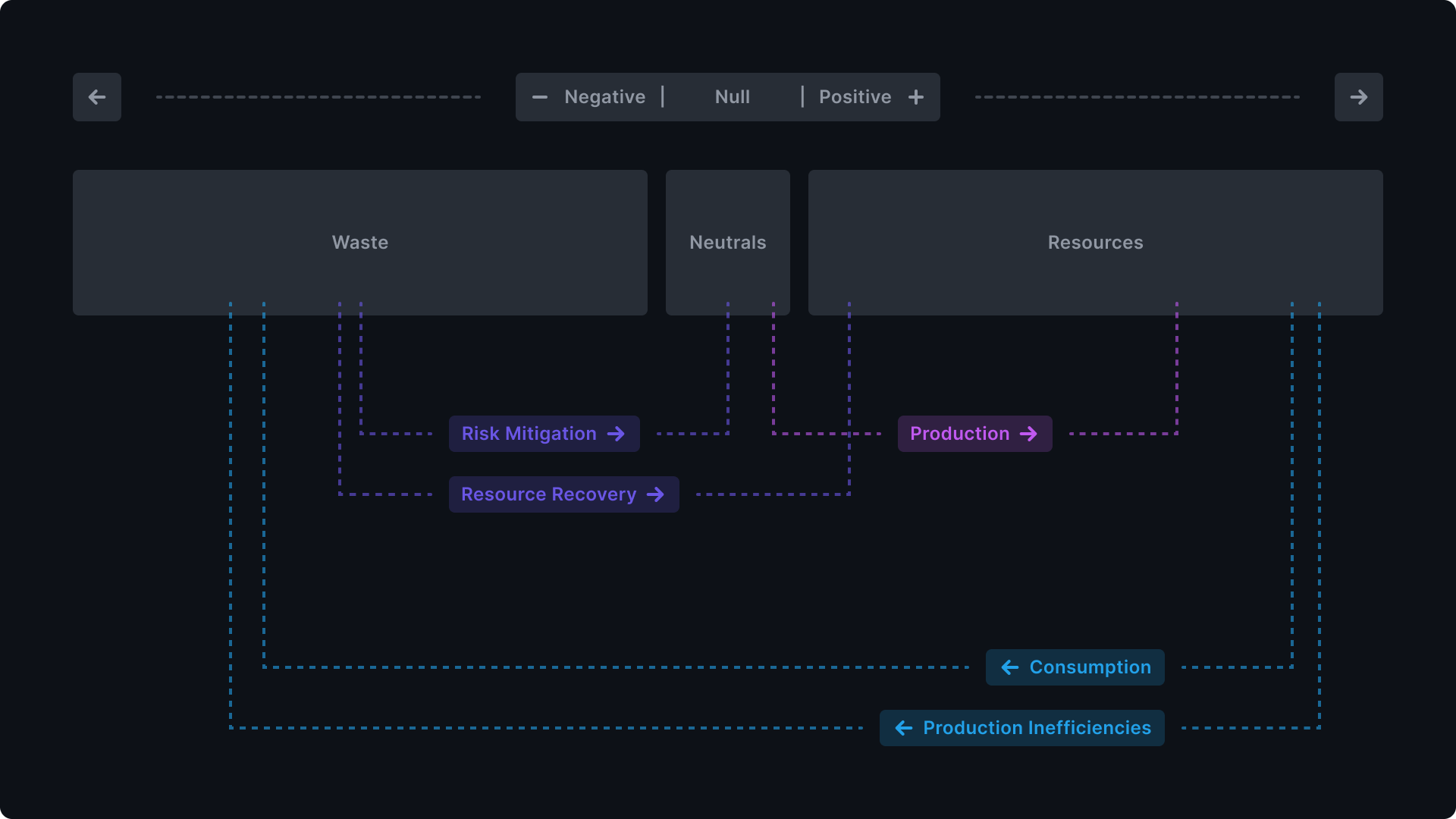Dynamic States of Materials
In the dynamic world of material valuation, understanding the intrinsic fluidity of utility states—resource, waste, and neutral—is pivotal. This realm, marked by constant evolution due to both internal and external factors, demands a framework capable of recognizing a material's singular utility state at any given point in time.
State Singularity
The valuation of materials is an inherently dynamic process, constantly in flux due to external influences and internal changes. Despite this fluidity, it's crucial to acknowledge that a material can only embody one utility state at any given moment—either as a resource, waste, or a neutral entity. This singular classification delineates the current utility of the material based on the existing balance between its potential benefits and associated risks.
This principle negates the common notion that a material can simultaneously serve as both waste and resource. Such a distinction is vital for accurately assessing the lifecycle and potential transformations of materials. Conversely, items initially deemed waste can undergo processes that enhance their utility, reclassifying them as valuable resources. This transformation underscores the importance of transformations in altering the utility of materials.
State Transitions
The transitions between utility states—resources, waste, and neutrals—are governed by changes in potential and risks, which can either increase or decrease utility. This fluctuations happen when value is added or subtracted, a dynamic can be summarized in the following table:
- In terms of potential, value is subtracted as benefits are realized and utility is consumed, while value is added when external efforts are exerted to increase a material's utility.
- In terms of risks, value is added when external efforts reduce potential harm, while value is diminished when the risks associated with materials increase.
Common Applications
Recognizing utility state transitions and how they work in real life scenarios opens pathways for an in-depth analysis of current waste management systems from an economical perspective.

-
Risk Mitigation. Implementing measures to contain or neutralize the hazards associated with waste, thereby minimizing its risks and transforming it into a neutral state.
Example: securely landfilling hazardous waste.
-
Resource Recovery Activities. Processes that convert waste back into useful resources, highlighting the potential for revaluation.
Example: scrap metal recycling into new products.
-
Production Value Chains. The transformation of raw materials into resources through processes that enhance their utility, while generating production waste due to process inefficiencies.
Example: turning sand into silicon for electronics.
-
Consumption. The effective use of resources in such a way that leads to their conversion into waste.
Example: packaging that becomes immediate waste upon product use.